ॐ श्री गुरुभ्यो नमः ॐ श्री शिवानन्दाय नमः ॐ श्री चिदानन्दाय नमः ॐ श्री दुर्गायै नमः
Source of all Images in this Blog-post : Google Images : ‘Google Image Search’ will reveal the multiple sources of every single image shared in this Blog. For more details, kindly see ‘Disclaimer‘
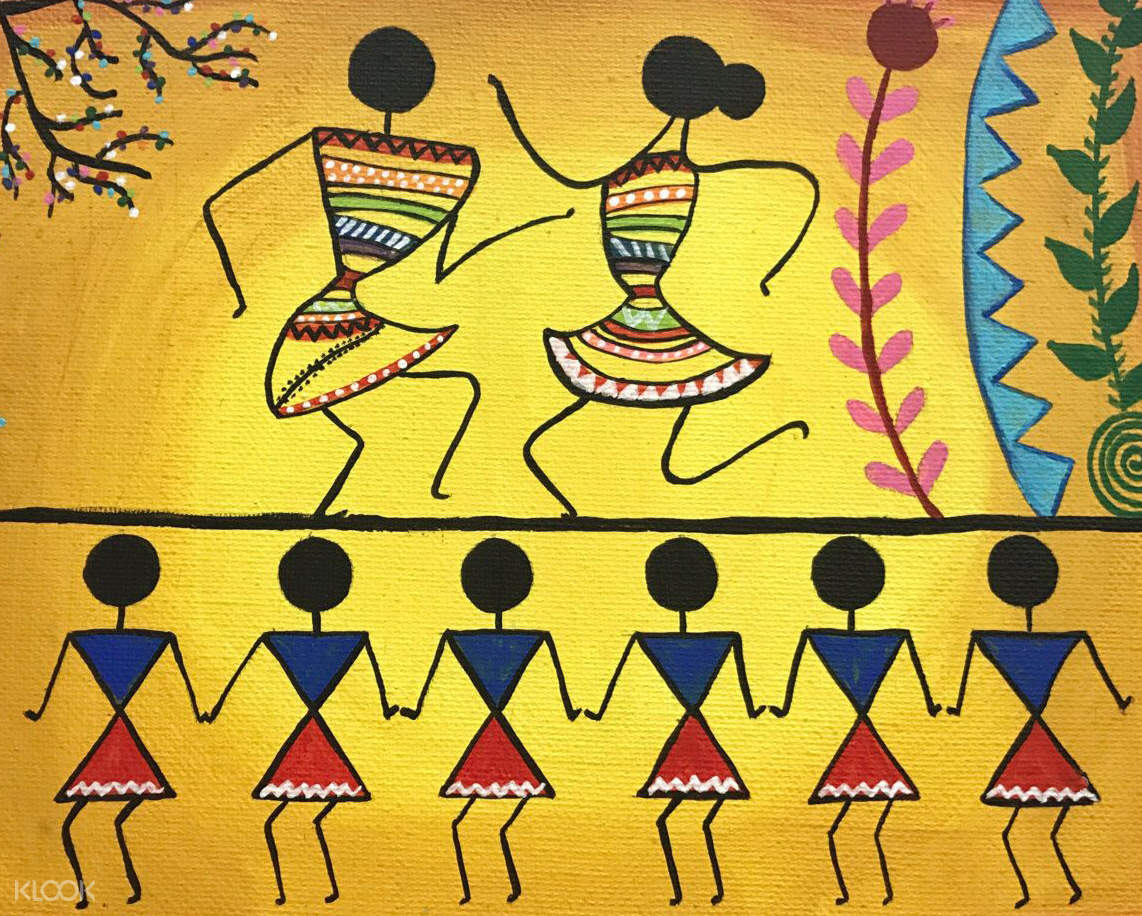
Warli painting is a form of tribal art mostly created by the tribal people from the North Sahyadri Range in Maharashtra, India. This range encompasses towns such as Dahanu, Talasari, Jawhar, Palghar, Mokhada, and Vikramgad of Palghar district. This tribal art originated in Maharashtra, where it is still practiced today.
Want to Buy Warli Paintings? : Here’s Google Shopping with Unlimited Choice
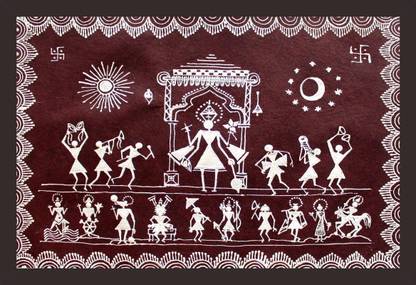
Tradition :
The Warli Painting tradition in Maharashtra are among the finest examples of the folk style of paintings. The Warli tribe is one of the largest in India, located outside of Mumbai.
Despite being close to one of the largest cities in India, the Warli reject much of contemporary culture. The style of Warli painting was not recognised until the 1970s, even though the tribal style of art is thought to date back as early as 10th century A.D.
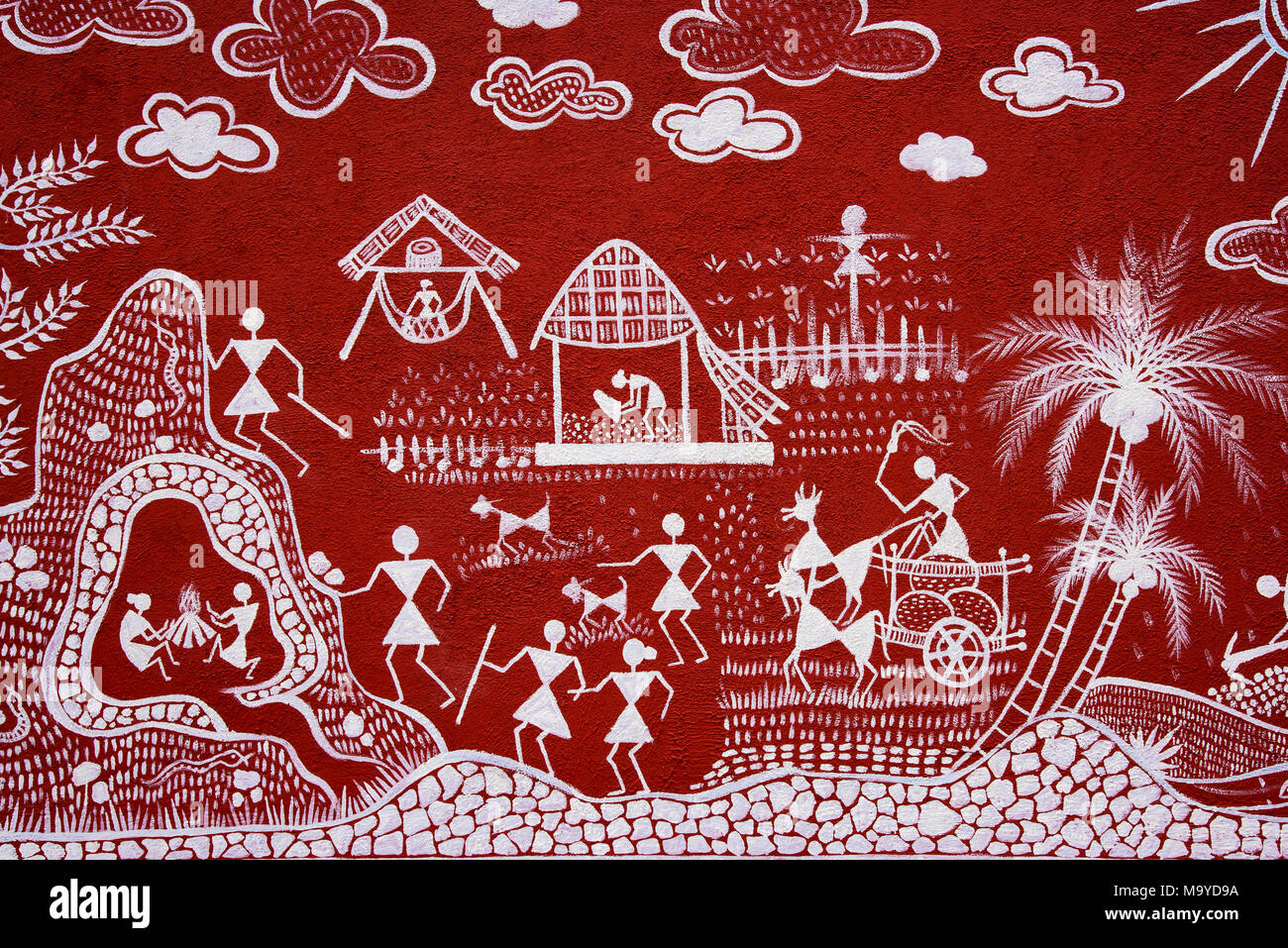
The Warli culture is centered on the concept of Mother Nature and elements of nature are often focal points depicted in Warli painting. Farming is their main way of life and a large source of food for the tribe.
Want to Buy Warli Paintings? : Here’s Google Shopping with Unlimited Choice
They greatly respect nature and wildlife for the resources that they provide for life. Warli artists use their clay huts as the backdrop for their paintings, similar to how ancient people used cave walls as their canvases.
A Stream of Warli Painting Videos on YouTube : Click Here to Explore & Watch
Jivya Soma Mashe, the artist in Thane district has played a great role in making the Warli paintings more popular. He has been honoured with a number of national and central level awards for his paintings. In the year 2011, he was awarded Padmashree.

Want to Buy Warli Paintings? : Here’s Google Shopping with Unlimited Choice
Painting Technique :
These rudimentary wall paintings use a set of basic geometric shapes: a circle, a triangle, and a square. These shapes are symbolic of different elements of nature.
The circle and the triangle come from their observation of nature. The circle represents the sun and the moon, while the triangle depicts mountains and conical trees.
A Stream of Warli Painting Videos on YouTube : Click Here to Explore & Watch
In contrast, the square renders to be a human invention, indicating a sacred enclosure or a piece of land.
The central motif in each ritual painting is the square, known as the “chauk” or “chaukat”, mostly of two types known as Devchauk and Lagnachauk. Inside a Devchauk is usually a depiction of Palaghata, the mother goddess, symbolizing fertility.

Male gods are unusual among the Warli and are frequently related to spirits which have taken human shape. The central motif in the ritual painting is surrounded by scenes portraying hunting, fishing, and farming, and trees and animals.

Want to Buy Warli Paintings? : Here’s Google Shopping with Unlimited Choice
Festivals and dances are common scenes depicted in the ritual paintings. People and animals are represented by two inverse triangles joined at their tips: the upper triangle depicts the torso and the lower triangle the pelvis. Their precarious equilibrium symbolizes the balance of the universe.
The representation also has the practical and amusing advantage of animating the bodies.

Another main theme of Warli art is the denotation of a triangle that is larger at the top, representing a man; and a triangle which is wider at the bottom, representing a woman. Apart from ritualistic paintings, other Warli paintings covered day-to-day activities of the village people.
One of the central aspects depicted in many Warli paintings is the tarpa dance. The tarpa, a trumpet-like instrument, is played in turns by different village men.
Men and women entwine their hands and move in a circle around the tarpa player. The dancers then follow him, turning and moving as he turns, never turning their backs to the tarpa.

The musician plays two different notes, which direct the head dancer to either move clockwise or counterclockwise. The tarpa player assumes a role similar to that of a snake charmer, and the dancers become the figurative snake.
The dancers take a long turn in the audience and try to encircle them for entertainment. The circle formation of the dancers is also said to resemble the circle of life.

Materials Used :
The simple pictorial language of Warli painting is matched by a rudimentary technique. The ritual paintings are usually created on the inside walls of village huts.
The walls are made of a mixture of branches, earth and red brick that make a red ochre background for the paintings.
The Warli only paint with a white pigment made from a mixture of rice flour and water, with gum as a binder. A bamboo stick is chewed at the end to give it the texture of a paintbrush.
Walls are painted only to mark special occasions such as weddings, festivals or harvests.
The Tales of the folk from the west – Warli painting :
Warli painting is a tribal art mostly done by Adivasi from North Sahyadri Range in India, i.e. in western India .
Warli is the name of the largest tribe found on the northern outskirts of Mumbai, in Western India. Despite being in such close proximity of the largest metropolis in India, Warli tribesmen shun all influences of modern urbanization.

Warli Art was first discovered in the early seventies. While there are no records of the exact origins of this art, its roots may be traced to as early as the 10th century A.D.
Want to Buy Warli Paintings? : Here’s Google Shopping with Unlimited Choice
Their extremely rudimentary wall paintings use a very basic graphic vocabulary: a circle, a triangle and a square. Their paintings were monosyllabic.
The circle and triangle come from their observation of nature, the circle representing the sun and the moon, the triangle derived from mountains and pointed trees. Only the square seems to obey a different logic and seems to be a human invention, indicating a sacred enclosure or a piece of land.
So the central motive in each ritual painting is the square, known as the “chauk” or “chaukat”, mostly of two types: Devchauk and Lagnachauk.
Inside a Devchauk, we find Palaghata, the mother goddess, symbolising fertility. Significantly, male gods are unusual among the Warli and are frequently related to spirits which have taken human shape.
The central motif in these ritual paintings is surrounded by scenes portraying hunting, fishing and farming, festivals and dances, trees and animals.
Human and animal bodies are represented by two triangles joined at the tip; the upper triangle depicts the trunk and the lower triangle the pelvis. Their precarious equilibrium symbolisesthe balance of the universe, and of the couple, and has the practical and amusing advantage of animating the bodies.
Apart from ritualistic paintings, other warli paintings covered day-to-day activities of the village folks.
One of the central striking aspect of many warli painting is the “Tarpa dance”- the tarpa, a trumpet like instrument, is played in turns by different men.
Men and women entwine their hands and move in a circle around the tarpa player.The dancers follow the tarpa player, turning and moving as he turns, never turning their back to the tarpa. The circle formation of the dancers is also said to be a resemble the circle of life.
Stylistically, they can be recognized by the fact that they are painted on an austere mud base using one color, white, with occasional dots in red and yellow. This colour is obtained from grounding rice into white powder.
These days, even men have taken to painting and they are often done on paper incorporating traditional decorative warli motifs with modern elements such as the bicycle, etc.
Warli paintings on paper have become very popular and are now sold all over India. Today, small paintings are done on cloth and paper but they look best on the walls or in the form of huge murals that bring out the vast and magical world of the Warlis.


In the 1970s this ritual art took a radical turn, when Jivya Soma Mashe and his son Balu Mashe started to paint, not for any special ritual, but because of his artistic pursuits.
Warli painting also featured in Coca-Cola’s ‘Come home on Diwali’ ad campaign in 2010 was a tribute to the spirit of India’s youth and a recognition of the distinct lifestyle of the Warli tribe of Western India.

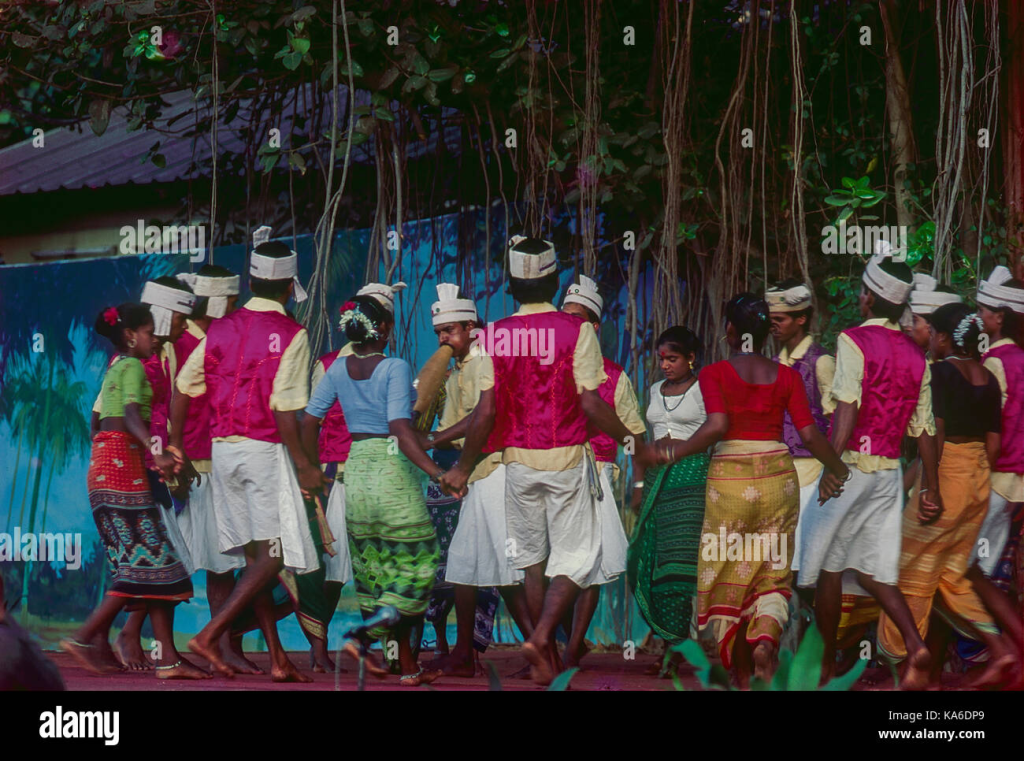
********************************
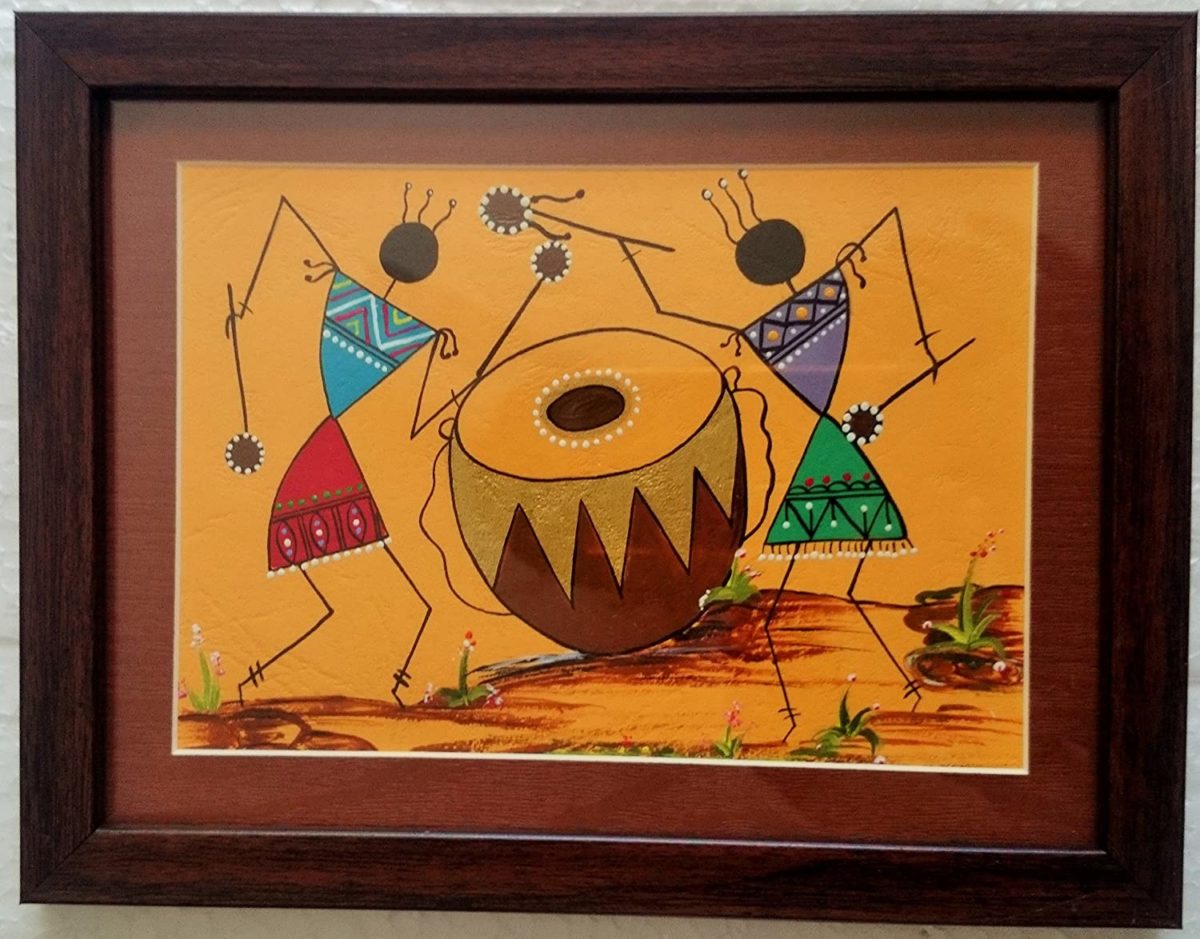
One reply on “Warli Wonders: The Captivating Warli Paintings of Maharashtra’s Warli Tribes”
Very useful information !!
Pls visit: https://penkraftonline.in/ArtAttackHome